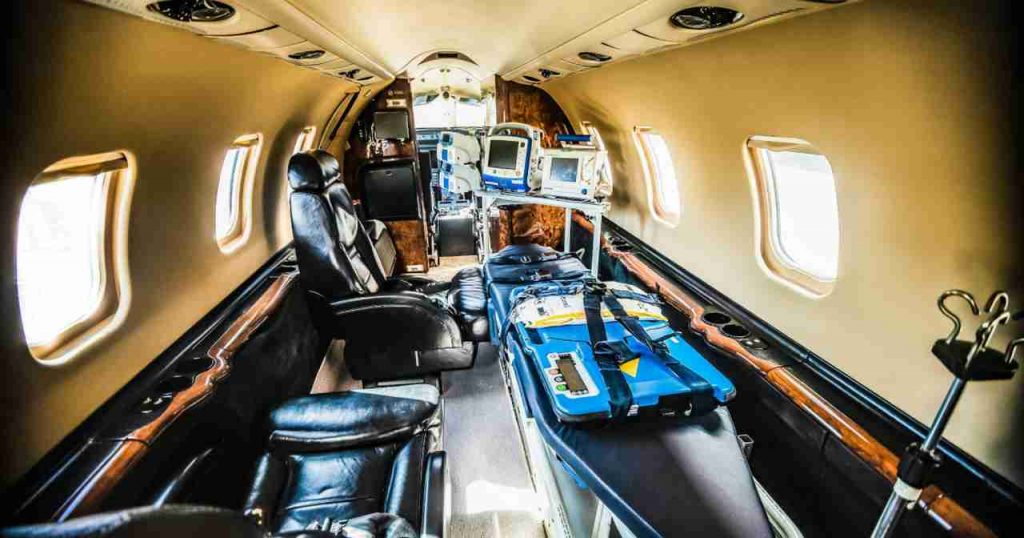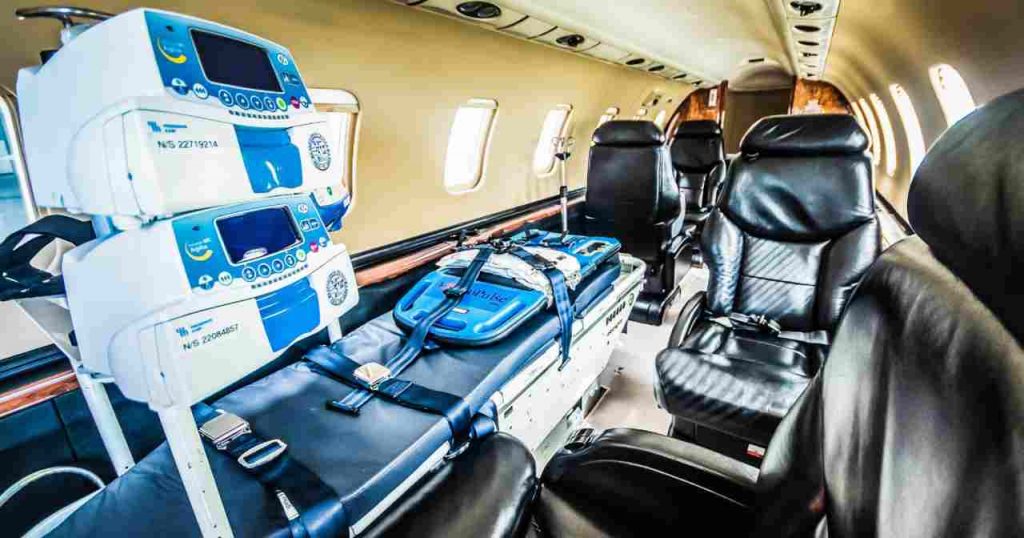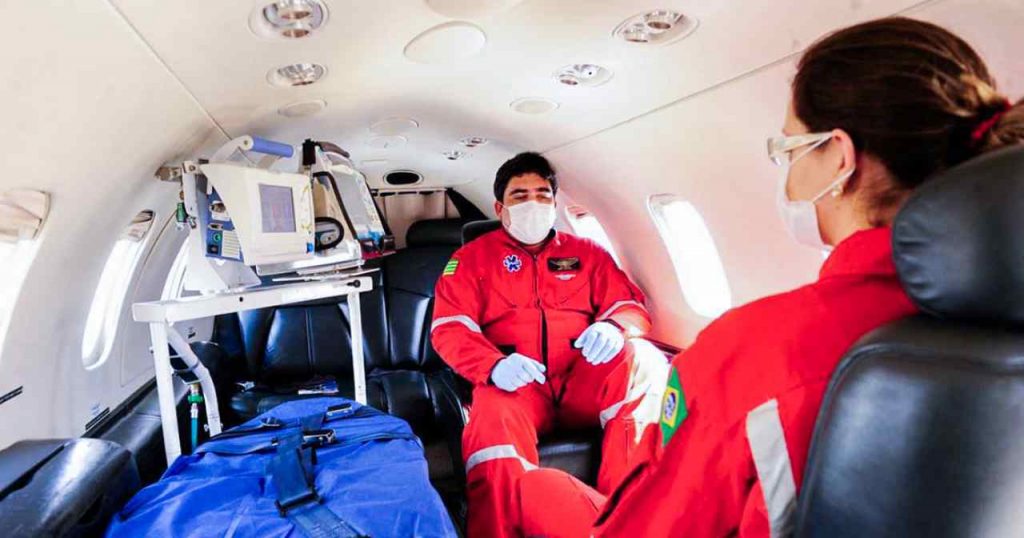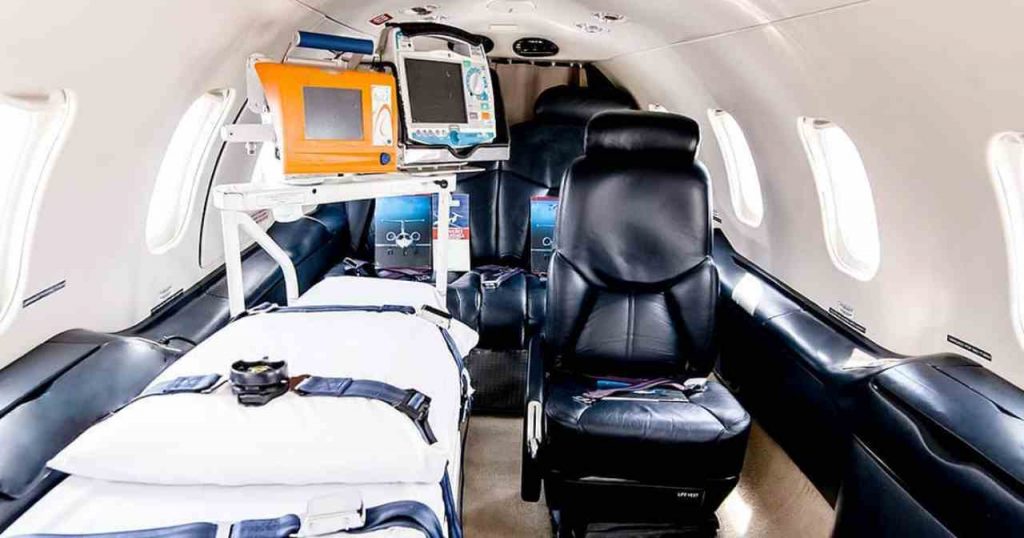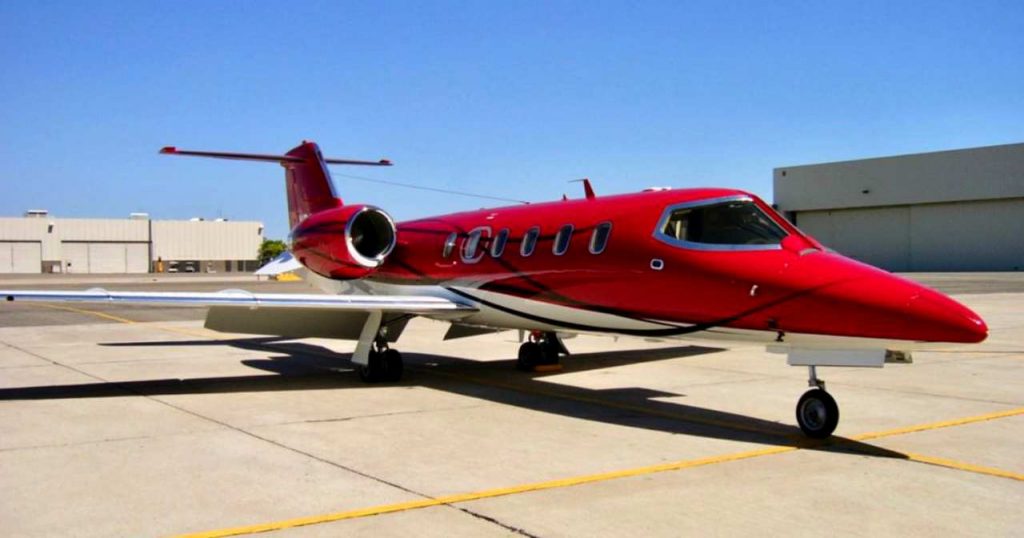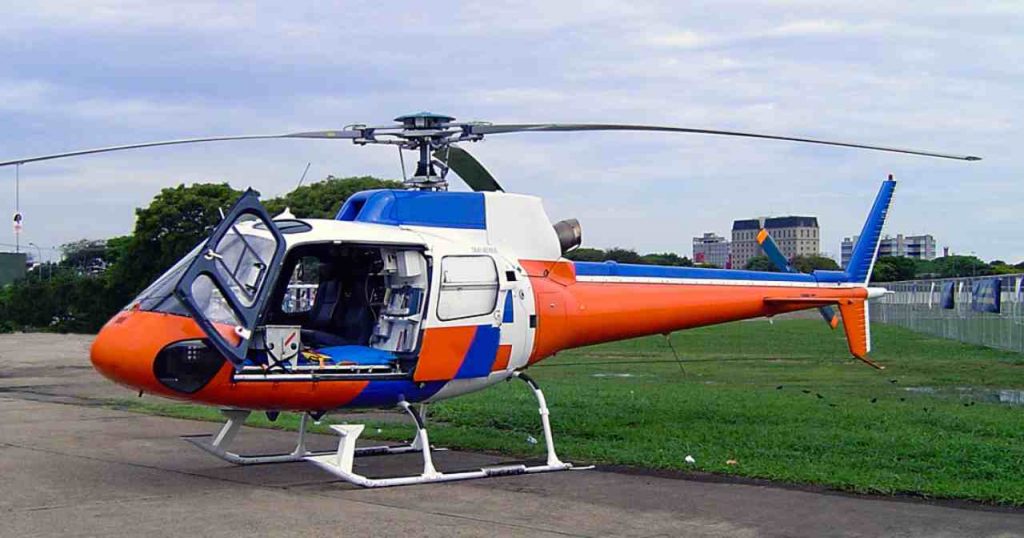Switch to:
 EN
EN  Português (PT)
Português (PT)  Español (ES)
Español (ES)
Filled with specific details and specialized structures, the aeromedical passenger transport with COVID-19 is a complex service. Due to the high transmission rates of the novel coronavirus, a series of precautions had to be taken, and the aviation companies providing this type of transport needed to create new protocols and adapt existing procedures.
Flapper Aeromedical is a network of more than 100 aircraft approved for aeromedical transport in Latin America. We are the largest airline charter company in the region, and we have more than 50 years of combined experience in serving local and international customers. It is important to remember that in the case of emergency situations, every second can be decisive.
Differences Between Regular Aeromedical Transport vs. Aeromedical Passenger Transport With COVID-19
The main difference between both transports are the protocols required when taking a passenger infected with the coronavirus. To begin with, the crew involved in transporting passengers with COVID-19 makes use of personal protective equipment (PPE) specially designed for this service. This includes antibacterial clothing, gloves, and breathing masks to ensure that the virus is not transmitted during transport. The asepsis procedure – which includes complete disinfection of the plane’s internal surfaces and medical equipment – is also performed before and after the flight.
Every aeromedical transport operation undergoes a careful screening, with a medical evaluation, to find out if it is possible to carry out the transport and understand the patient’s health and risk situation. In the case of this disease, care is doubled.
“In the medical sense, those infected with the coronavirus have a very rapid evolution (clinical worsening), so it is necessary to be alert. Therefore, medical screening, with our specialists trained in aerospace physiology, is more judicious and essential for handling this type of passenger ”, explains Alexsandra Alves Rosa of Uniair, one of the members of the Flapper Aeromédico alliance.
Another point that needs attention, being different from regular aeromedical transport, is the confirmation of a bed at the disembarkation point. Due to the pandemic, the public system has been facing crowding, with a lack of vacancies in hospitals, making the demand for aviation companies that offer this type of service particularly high.
“We need to have two certainties: the patient’s clinical condition and the confirmed bed. We have the entire structure to maintain it during transport, but we cannot handle it after landing. The patient needs a place in a health institution”, comments Alexsandra.
Flapper Aeromédico customers generally opt for an ambulance transport from the moment of disembarkation to the hospital. “We believe that it is essential to provide a complete service from point A to point B to avoid extra risks to patients, as well as the spread of the virus.” adds Flávio Carvalho, Director of Flapper.
Takeoffs and landings at specific times are also fundamental issues for this type of operation. Due to the lack of beds in Brazil, it is necessary to be attentive so that there is no downtime. Specific training for the crew, aimed at the necessary care to contain the spread of the virus, is also necessary.
Special Equipment And Structure For Air Medical Transport Of Passengers With COVID-19
According to the ANAC rules in force, a passenger with the disease and who needs an aeromedical flight, cannot travel on any airplane by air taxi, much less alone and without a companion. The traveler needs a specialized structure, which includes oxygen and support for monitoring and observation.
“The patient needs to have oxygen support and a very active vital parameterization. In addition, they are accompanied from bed to bed – from collection at the hospital of origin to the destination. They need to be watched all the time,” says the Director General of Manaus Aerotaxi and partner at Flapper, Marcos Fernandes Pacheco.
On a regular air taxi service flight, only the flight attendants and the pilot are present. In an aeromedical operation, a whole team of doctors and nurses is available, providing support throughout the service.
In addition, there is the issue of passenger intubation. For safety, they need to be intubated for transportation. Typically, the process is performed at the hospital, where the patient is already stabilized and ready for removal. Ideally, there should be no sudden changes in flight. In mild cases of COVID-19 infections, the passenger can travel in regular seats. However, both the presence of a nurse and specialized equipment is necessary.
Finally, there is also the issue of the hangar. In some locations, airport authorities have designated special areas for boarding and disembarking infected passengers. At Congonhas Airport, for example, the ambulance can pick up the passenger near a commercial terminal or at one of the executive hangars authorized for such operations (at extra cost).
Aircraft Used To Aeromedical Passengers Transport With COVID-19
Some aircraft indicated for the aeromedical passenger transport with COVID-19 are the turboprop: King Air C90GTX, King Air B200GT, and Pilatus PC-12 and the jets: Learjet 31A and Learjet 45. In addition, we have helicopters, such as the Squirrel AS350, Eurocopter EC135, and Eurocopter EC155, which have the capacity to perform the aerial ICU service.
The B200GT has the characteristic of being able to be configured with a double stretcher, allowing the transport and / or removal of two critically ill patients, in the ICU situation, at the same time. “This was very useful at the time of collapse in Manaus, for example, where we were able to remove as many patients as possible from that region,” says Alexsandra. Smaller models, such as Cheyenne or Seneca, accommodate a patient, a companion, and the medical team.
“We operate with jets and turboprops. All of our aircraft, including amphibians, are double stretchers and, with that, we were able to provide simultaneous service in the North region, which was very affected. This can bring savings of 50% on the flight for the contractor, since there are two patients for the price of one”, points out Pacheco.
Flapper Protocol For Aeromedical Passenger Transport with COVID-19
In order to fly safely, Flapper has a special protocol aimed at passengers who have contracted the disease. The integrated network of aircraft used is certified for aeromedical flights, approved under ANAC RBAC 135 or its local equivalent.
In accordance with the flight safety standards of Wyvern Safety and ARGUS, used by Flapper, priority will always be given to the aircraft best positioned and equipped for a given mission, including additional equipment, such as isolation caps or helmets for these patients. It is recommended that the patient be transported in the blister, except when the medical evaluation allows transportation via the seat. Flapper’s procedures follow the recommendations of the Brazilian Association of Emergency Medicine.
Check out the protocols below:
Aeromedical removal
• People with suspected or confirmed infection with the novel coronavirus should wear a surgical mask throughout the removal period;
• Guide companions, who should also wear a surgical mask, regarding the importance of hand hygiene;
a) Care during removal
• Avoid wearing ornaments (such as earrings, bracelets, rings and chains), unless they have a function in the operation (eg watch); dispense with the use of badges;
• Eliminate, if possible, the use of document folders, papers, backpacks, etc .;
• Wrap operational documents, in addition to tablets, cell phones, and other objects, in plastic protectors;
• It is suggested to keep the cabin compartment closed during the flight (door or curtain).
b) Boarding and disembarking
• Embarkation and disembarkation must be carried out in the courtyard, with hangar gates closed, involving as few collaborators as possible (aeromedical staff and ambulance driver);
• Airports that do not have a dedicated general aviation terminal (for example Santos Dumont [SDU, SBRJ]) should be avoided. In cases of emergency, the removal procedure must be confirmed with airport managers.
c) Finalization
• Removal of PPE and overalls, preferably in an external environment with immediate placement in disposable plastic bags;
• The aircraft performs disinfection after the entire flight with equipment recommended by the WHO. All internal surfaces of the aircraft and ambulance must be cleaned and disinfected after transport, following the standard operating procedure defined for cleaning and disinfection activities; 70% alcohol, sodium hypochlorite, or other suitable disinfectant may be used;
• Wait at least 4 hours for reusing the aircraft and / or ambulance.
d) Use of PPE in individuals involved in aeromedical removal
- Doctors and nurses
• N95 or PFF2 + cover with surgical mask (if preserving N95 / PFF2)
• Flight suit + waterproof suit or apron
• Gloves
• Eye protector and / or facial shield
• Cap
- Pilots
• N95 or PFF2 + cover with surgical mask (if preserving N95 / PFF2)
• UNIAIR flight suit + waterproof suit or apron
• Gloves
• Eye protector and / or facial shield (only on patient embarkation / disembarkation)
• Cap
- Patient
• Surgical mask (if compatible)
- Escort
• Surgical mask
- Support team
• Surgical mask
• Simple apron
• Gloves
• Eye protection
• Cap
Flapper possess the best options for aeromedical transport of passengers with COVID-19. To receive a quote, contact us via email at support@flapper.aero or via WhatsApp:



